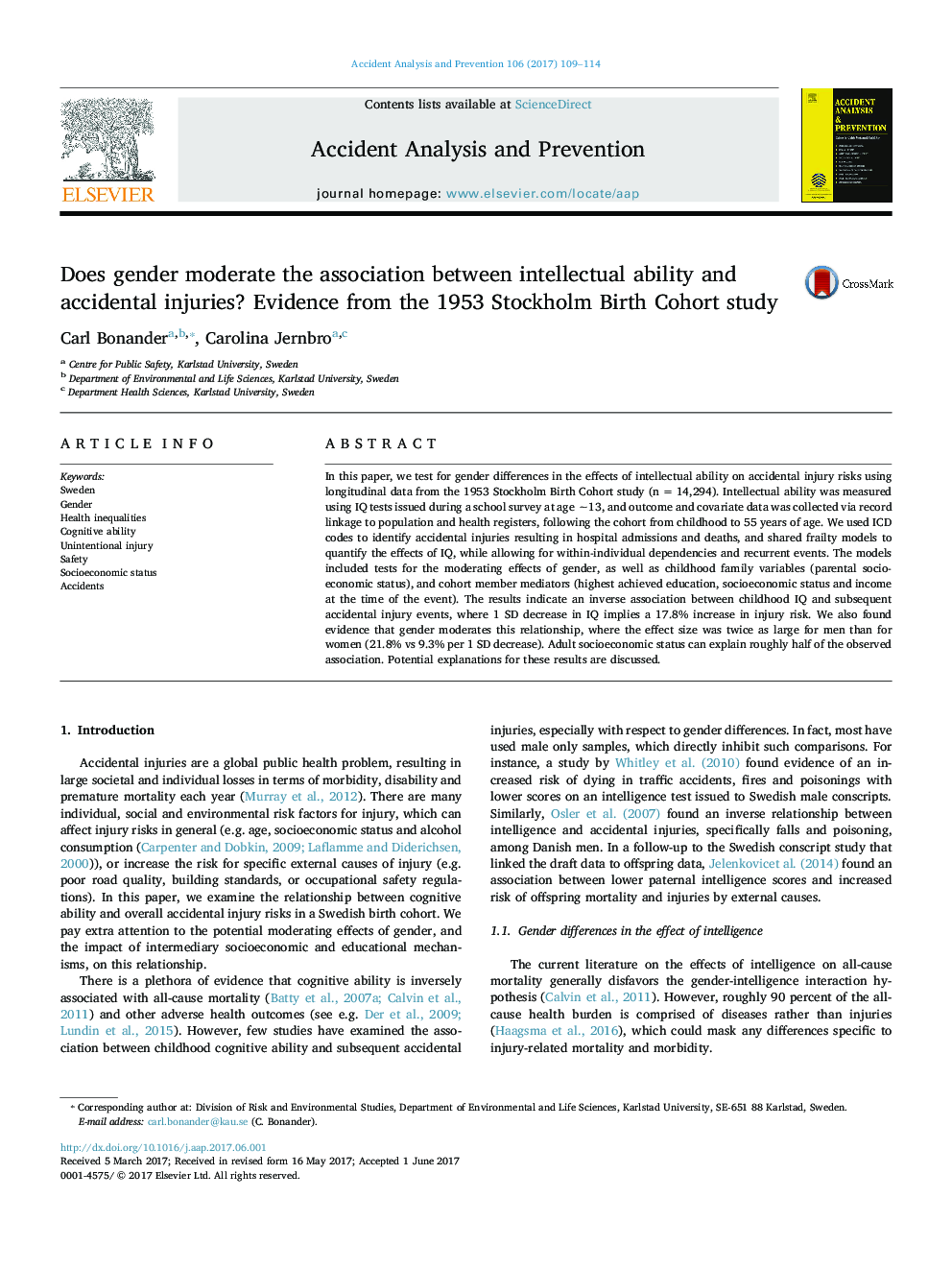| Article ID | Journal | Published Year | Pages | File Type |
|---|---|---|---|---|
| 4978676 | Accident Analysis & Prevention | 2017 | 6 Pages |
Abstract
In this paper, we test for gender differences in the effects of intellectual ability on accidental injury risks using longitudinal data from the 1953 Stockholm Birth Cohort study (n = 14,294). Intellectual ability was measured using IQ tests issued during a school survey at age â¼13, and outcome and covariate data was collected via record linkage to population and health registers, following the cohort from childhood to 55 years of age. We used ICD codes to identify accidental injuries resulting in hospital admissions and deaths, and shared frailty models to quantify the effects of IQ, while allowing for within-individual dependencies and recurrent events. The models included tests for the moderating effects of gender, as well as childhood family variables (parental socioeconomic status), and cohort member mediators (highest achieved education, socioeconomic status and income at the time of the event). The results indicate an inverse association between childhood IQ and subsequent accidental injury events, where 1 SD decrease in IQ implies a 17.8% increase in injury risk. We also found evidence that gender moderates this relationship, where the effect size was twice as large for men than for women (21.8% vs 9.3% per 1 SD decrease). Adult socioeconomic status can explain roughly half of the observed association. Potential explanations for these results are discussed.
Keywords
Related Topics
Physical Sciences and Engineering
Chemical Engineering
Chemical Health and Safety
Authors
Carl Bonander, Carolina Jernbro,
